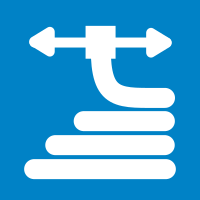3D Druck

3D printing is known as a rapid prototyping and additive manufacturing technique used to fabricate complex architecture with high precision through a layer-by-layer building process. This processing technique nowadays is becoming very popular for the fabrication of 3D materials with micrometer precision and internal nanostructures for various application purposes ranging from biomedical to energy storage and conversion to energy savin applications. Different printing options are available in our group.
1) Fused filament fabrication (FFF)
2) Laser-based: Stereolithography (SLA)
3) Extrusion based: Direct Ink Writing (DIW)
4) Droplet based (Inkjet)
For 3D printing the important ink properties are as following:
Printability
Mechanics/ reology
Functionalizability
3D printed constructs have following features:
Precisely controlled architecture:
External shape, internal pore geometry, and interconnectivity
Highly reproducibility
Repeatability
3D printing of multi-functional highly porous construct
In her current project, Dr. Maleki and her group are conducting various projects for developing 3D printed constructs for different applications as following:
1) Fabrication of mechanically stable and bioactive hierarchically organized porous 3D scaffolds from hybrid gels for bone repair applications to solve the current hurdles of scaffold mediated bone tissue engineering. See further ''Project 2'' in here
2) 3D printing of electrodes for supercapacitors and metal ions’ batteries from carbonaceous nanostructures with the purpose of rapid and sustainable fabrication of 3D electrodes for efficient 3D mass transport, 3D electrical conductivity with high stability.
Ansprechpartner
-

Prof. Dr. Dr. (h.c.) Sanjay Mathur 430 322b
- Telefon
- +49 221 470-4107
-
sanjay.mathur
uni-koeln.de
-
Dr. Thomas Fischer 421 322b
- Telefon
- +49 221 470-3292
-
t.fischer
uni-koeln.de
-

Hajar Homa Maleki 420
- Telefon
- +49 221 470-3099
-
h.maleki
uni-koeln.de
